Long Course Swimming, Forever Supreme
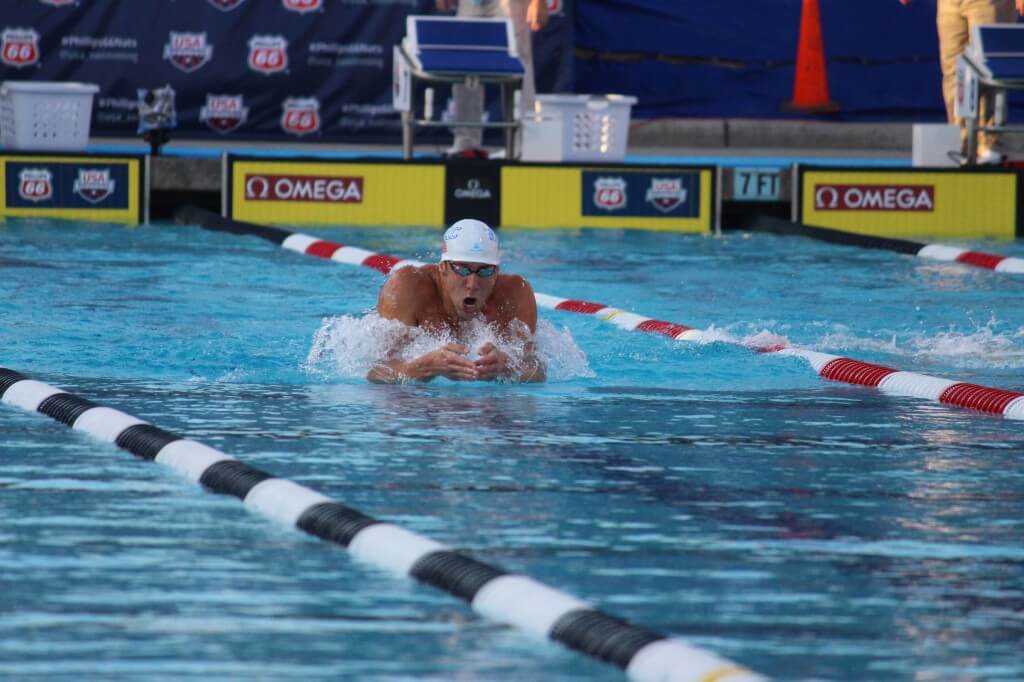
Commentary by Tucker Rivera, Swimming World College Intern.
In just a few short months, the long course season begins. As the New Year draws ever closer, so does the end of our beloved short course season. This LCM season, however, is going to be a little bit different than the previous two seasons. “Why?” you ask. Well, now we finally get to qualify for the 2020 Olympic Trials. And while few of us are actually gifted enough to compete in the spectacle known as Omaha, there’s a certain air of excitement that’s sure to buzz around the sport in the coming year and a half.
And while FINA is being challenged more stringently than ever before, it is not difficult to claim the following: swimming is hard, and long course swimming is harder. Yet despite that grueling fact, long course swimming is and always will be the best type of swimming.
Fewer Turns
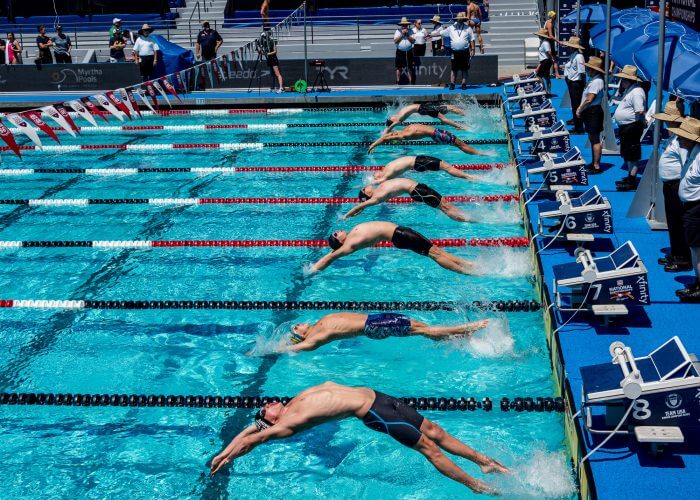
Photo Courtesy: Peter H. Bick
Ever have a fantastic race, only to have ruined because you got destroyed on the turn by the taller swimmer next to you? Fear no more, because in LCM swimming, the walls don’t lie. Half as many turns means almost twice as much swimming. In a 200 backstroke SCY, you’re only required to swim on the surface for 80 of those yards. Meanwhile, in a 200 backstroke LCM, you’re required to swim at least 140 meters! That’s 75 percent more swimming. More swimming equals better swimmers – there’s no two-ways about it.
Distance Swimmers Can Let Loose
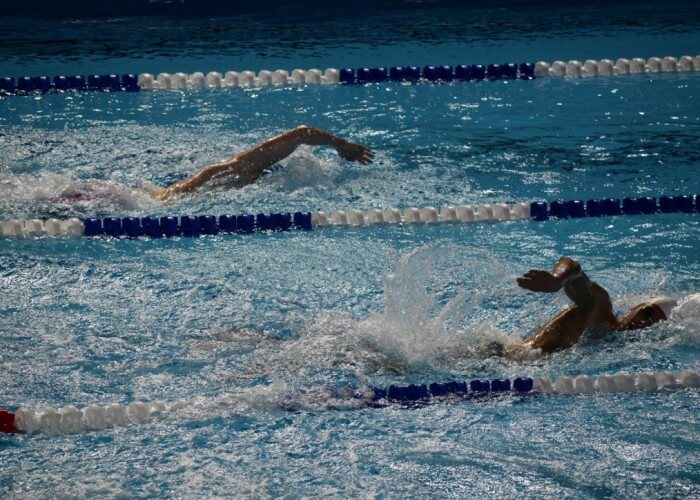
Photo Courtesy: Annie Grevers
Let us take a moment of silence for our distance-swimming brothers and sisters who have to spend eight months of the year training short course. We apologize for the fact that you have to endure weeks and weeks of getting interrupted every thirteen strokes. It’s borderline rude that we make you swim in such a small body of water. Don’t fret, friends: in a few months, you’ll be able to lose your stroke count and all will be right in the world.
Better Practices
You want to know what feels exactly the same? 6,000 yards and 6,000 meters.
Over a span of two hours, you’re likely to swim almost the same number of meters in a long course practice as you are to swim in yards in a short course practice. More swimming equals higher fitness, and higher fitness equals higher endurance. Long course training is extremely beneficial to your development as an athlete.
The Olympics
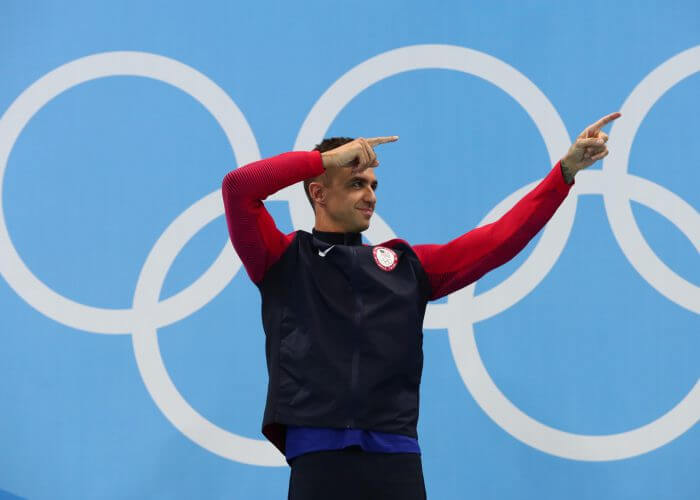
Photo Courtesy: Rob Schumacher-USA TODAY Sports
U.S. International Dominance
The only discipline that swimmers compete in globally, long course swimming allows for diversity in the sport that is unparalleled in short course yards and meters. Some claim that American swimming is “easy” because we swim in yards, not meters, during our short course season. When we dominate events like the PanAm Games, PanPacs, Olympics and World Championships, we cement our spot as the top swimming superpower. Long course swimming gives us the opportunity to strut our stuff on an international stage.
More Fun than Short Course
Swimming is the “Funnest Sport,” and long course swimming requires “more swimming.” This might mean that long course swimming is, by proxy, funner than short course swimming in the eyes of our governing body, USA Swimming.
Summer Training
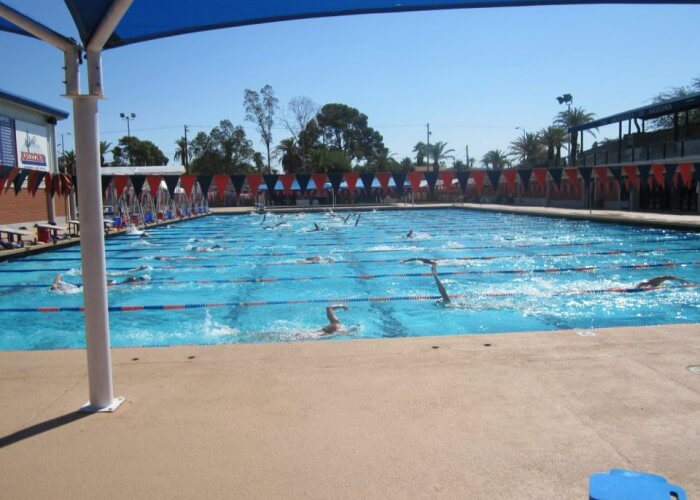
Photo Courtesy: Emma Schoettmer
The long course season occurs from April through August around the world. And while Australians have to do so in the bitter cold of winter, LCM in the states means no school, full immersion in the sport, and has strong implications in swimmers’ endurance and success during the subsequent short course season.
The Future of Long Course

Photo Courtesy: isl.global
Here in the U.S., we love short course swimming. We love our starts and turns and underwaters almost as much as we like winning. On the other hand, it seems that clubs across the country widely value long course training and racing as the best way to improve the sport in general. Long course swimming places swimming upon a pedestal and uses the standards of good technique and high preparation to determine the true talent of our sport’s best athletes.

Photo Courtesy: Fina
In providing a unifying link between the United States and the rest of the world, long course swimming globalizes our sport in ways that no other discipline is capable. The schism of SCM and SCY swimming has placed long course swimming at the forefront of legitimate competition in the swimming world. That being said, swimmers should also pay attention to the potential rise of the International Swimming League. If it became the favored organizational entity in which elite swimmers wish to train, that could instigate an unpredictable shift for our sport’s future. Will the U.S. switch to meters? Will Europe switch to yards? Will elite swimmers prefer short course swimming, boycott events like the Olympics (still organized by FINA), and alter the sport’s history, or will the ISL simply replace FINA?
Only time will be able to answer these questions. For the time being, FINA dominates the sport of swimming and has since its founding in 1908. It’s a long-standing organization that arguably hasn’t ever been challenged by athletes in such a large fashion throughout its entire existence. Even if FINA no longer becomes the global governor of our sport, it is likely that LCM swimming will have the same value in our future as it does now. Barring any drastic shifts in FINA’s ability to appease the demands of its elite athletes, long course swimming is going to reign supreme in our sport for eras and eras to follow.
All commentaries are the opinion of the author and do not necessarily reflect the views of Swimming World Magazine nor its staff.




I couldn’t disagree more.
I have been saying this for years. SCY and SCM meaninglessness
Only thing that matters is LCM
What a load of bull.
The thing is, long course pools are becoming fewer and farther between. The ones in our area (Northeast Ohio) are closing for a variety of reasons. The local college long course pool has five club teams sharing pool time and lane space. While this is cosy, none of the aforementioned clubs has access to any other long course pools, so much of their long course season is spent in short course pools, both yards and SCM.
To all the naysayers: The truth is a bitter pool to swallow.
LCM is the best, less turns and more time for me to stretch out my legs on ten 1500 oh and not to mention I can actually sprint in a long course pool
I much prefer the 1500m LCM to the 1650 SCY.
LCM you need to focus on stroke where SCM and SCY it’s all about turns and underwater work.
For almost all American swimmers, long course is pretty much irrelevant. Summer league meets, where most swimmers start and lots of swimmers have a lot of fun, are either SCY or SCM. High school and college meets are pretty much all SCY. You can have a really meaningful and successful swimming career in America without ever swimming in 50 meter pool. If FINA didn’t hold the Olympics in a 50 meter pool, there would really be no reason build them in America but for the fact that you can divide a 50 meter pool into two 25 yard pools. Or set it up at a 25 yard pool with more than 20 lanes.